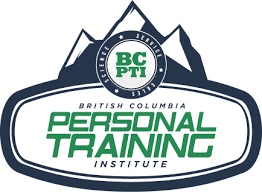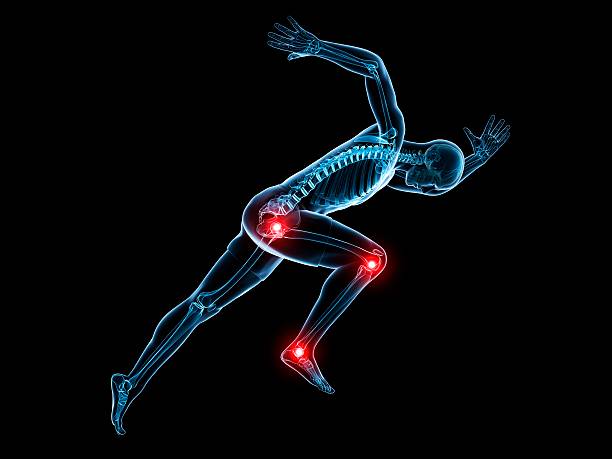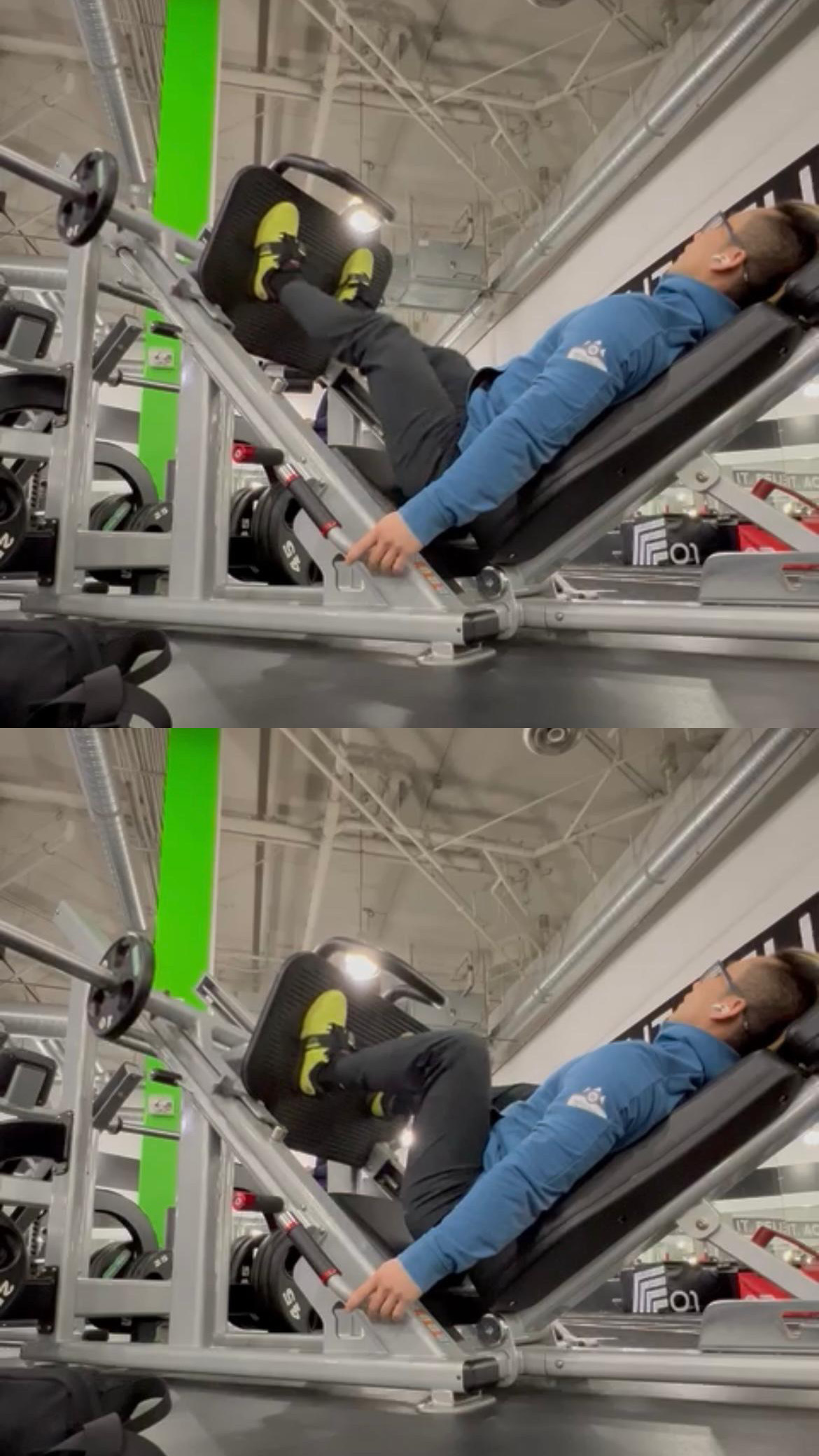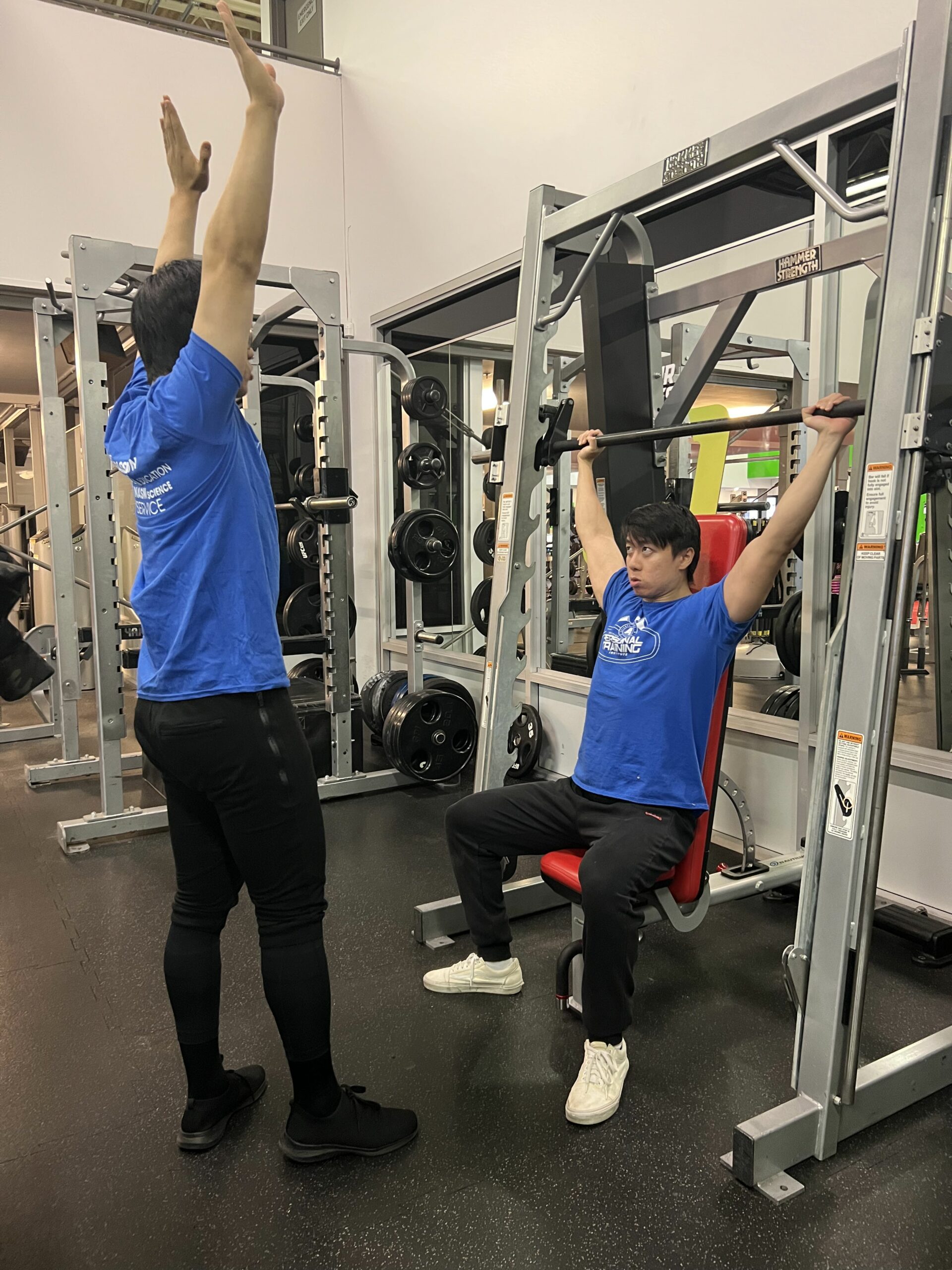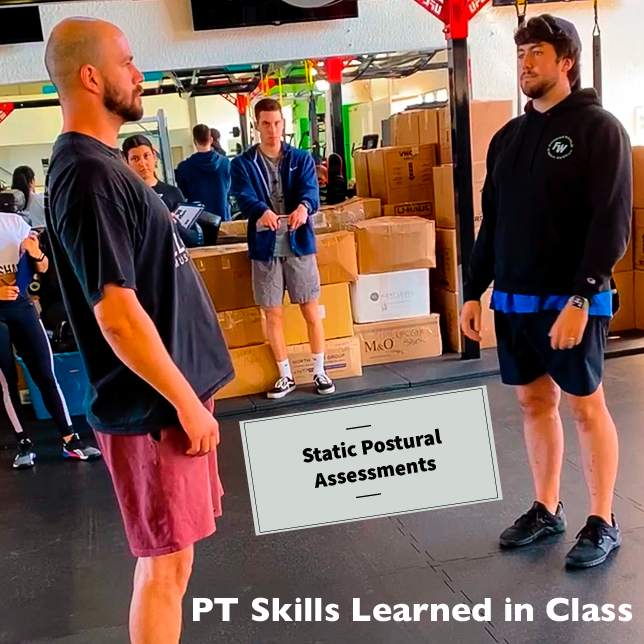I recently returned from the IRSHA Institute in North Carolina. During that visit we examined current fitness trends – one of which is flexibility / mobility training. One problem, traditional stretching doesn’t work very well. Therefore I felt compelled to help set the mobility flexibility record straight. Recent research has clearly shown that there was zero improvement in hamstring flexibility 4 weeks after performing 4 weeks of static stretching. After each stretch session, subjects showed significant improvement in hamstring flexibility. So why didn’t the changes last? What’s the issue? Its complex but the simple answer is: mobility without stability. Below is an example of creating mobility via stability.
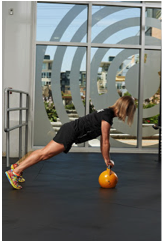
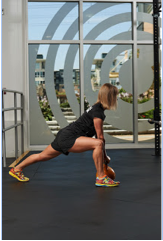
Holding a neutral spine & stable shoulder position when stepping improves mobility more than holding a static hip flexor stretch (see below) & helps to level the pelvis for heavy / athletic loading.
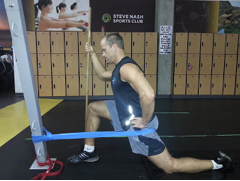
While flexibility / mobility training is an important part on my own training, I also train it knowing that “mobility is best gained and then maintained when accompanied by stability” of the associated joint (as pictured above).
“Mobility is best gained and then maintained when accompanied by stability”
Today and prior to writing this Blog I was again reminded of the necessity for increased stability. While running I felt heavy footed / not absorbing the ground well; even after an extensive treadmill based warm up. My workout involved alternating a 1mile run with a set of sled pushes. I started with a 1mile treadmill interval immediately followed by a set of sled pushes and pulls. Upon returning to the treadmill, in a fatigued state I felt much lighter while running. In that moment I realized that the core stabilization and overall strength required to move the sled had activated and perhaps leveled my pelvis and all the muscles around it. The additional stability improved my stride length and efficiency instantly 🙂
From that realization I was inspired to make this video of 6 exercises( https://youtu.be/PpHDRKIH8Z4) designed to stabilize and level the pelvis three-dimensionally. If I were to add anything to this program, it would be the Gray Cook Hip Lift (https://youtu.be/s4I9F9rIqwM?list=PL699322D32F4B5DDE ) which is a one footed Bridge. Each of these exercises is commonly part of the dynamic warm up I perform prior to most functional and/or athletic training. The more of these movements I perform, especially with:
- Proper alignment
- Deep stabilization known as drawing in
- Global stabilization known as core bracing, the less likely I am to feel nagging pain or sustain an injury during high intensity workouts. Mobility over stability is the reason I haven’t been injured working out unconventionally in over 4 years.
The more of these movements I perform…the less likely I am to feel nagging pain or sustain an injury
Regarding flexibility, and my upcoming blog “top 15 mobility drills that also improve stability & flexibility long-term”, it’s clear that most flexibility programs fail to create permanent change; this is due to an existing joint instability and the override capacity of the central nervous system. When the CNS recognizes instability (i.e. poor posture or spinal alignment, it restricts motion of some muscles and down regulates activation of others. Interestingly, when you stretch a tight muscle over an unstable joint, the CNS quickly recognizes it and sends a signal to re stabilize (i.e. tighten muscles around the joint). In this sense, stretching without stability leads to:
- A temporary flexibility change (see below). Take for an example a client with a winging scapula due to a weak serratus anterior. The pictures on the left represent a popular internal shoulder rotation and extension (i.e. reach under) static stretch that includes band mobilization and a stability wall figure 8, that focuses on stability of the shoulder joint. Not only does the research show that the effects are temporary, It’s clear, even in the short-term that the stability technique creates a greater change, a change that lasts for days vs min or hours.
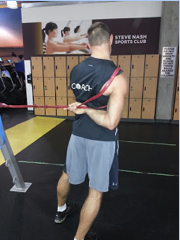
A shoulder stabilization exercise which might be considered to restrict internal rotation mobility
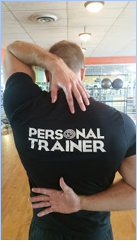
1 min of activating the serratus anterior via above exercise clearly made a difference to internal rotation
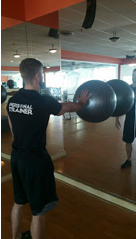

- Is kind of like opening Pandora’s box, you’re really not sure awaits inside. If you stretch tight muscles before a workout it may temporarily turn-down the mechanoreceptor & the central nervous system protective mechanism of tightness. It’s temporary, but stretching alone can disable a key mechanism (muscle tightness) needed for stability over an unstable joint. Therefore, increased range of motion via stretching alone may cause injury due to instability. This is especially true of stretching prior to athletic events and functional training (i.e. highly unpredictable training environments). The central nervous system will always rob Peter (mobility) to pay Paul (greater stability).
Stretching without stability is temporary & kind of like opening Pandora’s box,you’re really not sure what awaits inside.
This doesn’t mean that flexibility training is unimportant; rather it means that mobility must be accompanied with stability. Otherwise the outcome of improved mobility will be lost within a few hours of completing the stretching protocol. The movements in the video and my upcoming blog are formed around the concept of stabilizing and removing instabilities of the spine & the lumbo-pelvic hip complex. The goal is symmetrically strengthening the supporting structures before attempting improvements in flexibility and therefore creating mobility improvements that last. Here are a couple of mobility rules to keep in mind when stretching:
- Remove muscle asymmetries first. I prefer a symmetrical tight person over a bendy asymmetric one. If the left quad is tighter than the R, stretch the L 2x as much
- When performing a stretch focus on stabilizing the joint or an adjacent joint. For ex. during the Dead Bug, keep the spine neutral (no change in posture) but allow the legs and arms to move freely away from each other. The same applies for the Bird Dog.
- Never perform static stretches just prior to functional, high intensity, high velocity training (i.e. Pandora’s Box). Some form of dynamic warm-up is required, minimally after static stretching. Ideally save the static stretches for the post workout bendiness.
- Flexibility is analogous to an iceberg – there is so much more going on underneath the surface.
Good luck, have fun, and remember exercises are only as effective as a person performing them. I always recommend fitness goers seek professional assistance when performing finely detailed movements, especially if they have been suffering from long-term pain.
